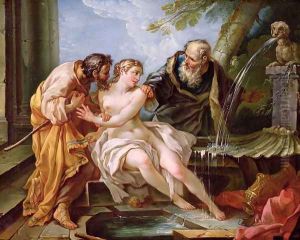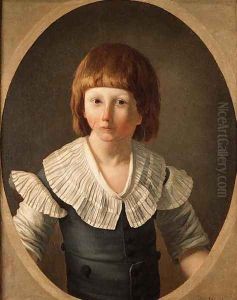Joseph-Marie the Younger Vien Paintings
Joseph-Marie Vien the Younger was a French painter born on July 18, 1761, in Paris. He was the son of Joseph-Marie Vien, a notable French painter of his time who played a significant role in the transition from Rococo to Neoclassicism. Vien the Younger was part of a lineage of artists and was often overshadowed by the fame of his father, making detailed information about his life and work less abundant.
Despite living in the shadow of his father's reputation, Vien the Younger made his own mark on the art world. He was trained by his father and embraced the Neoclassical style that was popular during that period. This style emphasized the values of the Enlightenment, focusing on simplicity, clarity, and an appeal to the intellect rather than the emotions, as was common in the preceding Rococo era.
Vien the Younger's career unfolded during a turbulent time in French history, which included the French Revolution and the Napoleonic Wars. These events inevitably influenced the art and culture of the period. Vien the Younger, like many artists of his time, had to navigate the changing political and social landscape. He exhibited his works at the Paris Salon, the official art exhibition of the Académie des Beaux-Arts in Paris.
Joseph-Marie Vien the Younger continued to work throughout the early 19th century. However, his legacy and contributions to art have been largely overshadowed by those of his father and other prominent Neoclassical artists such as Jacques-Louis David. Vien the Younger died on December 21, 1848, in Paris, leaving behind a body of work that, while not as widely recognized, contributed to the rich tapestry of French Neoclassicism.

